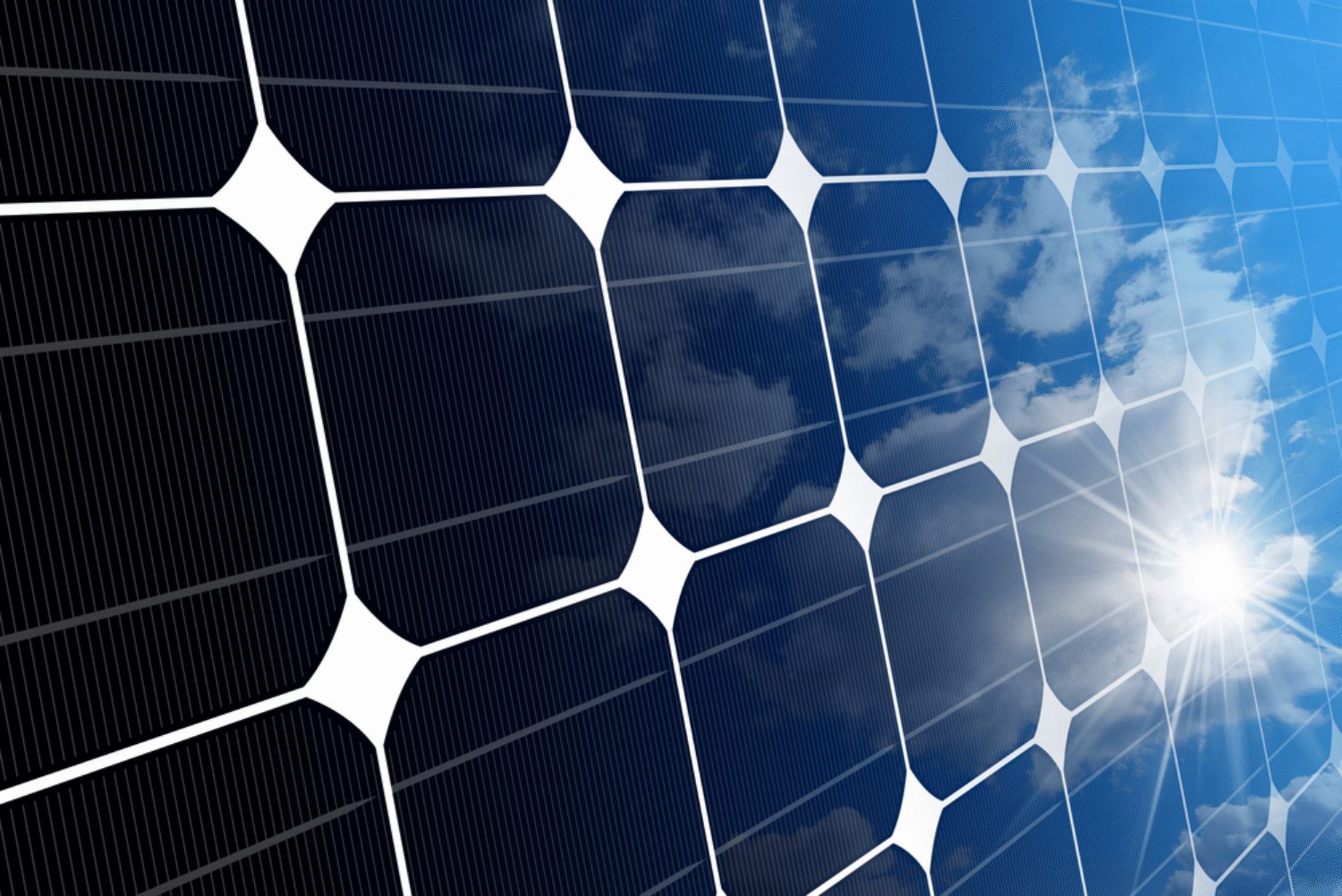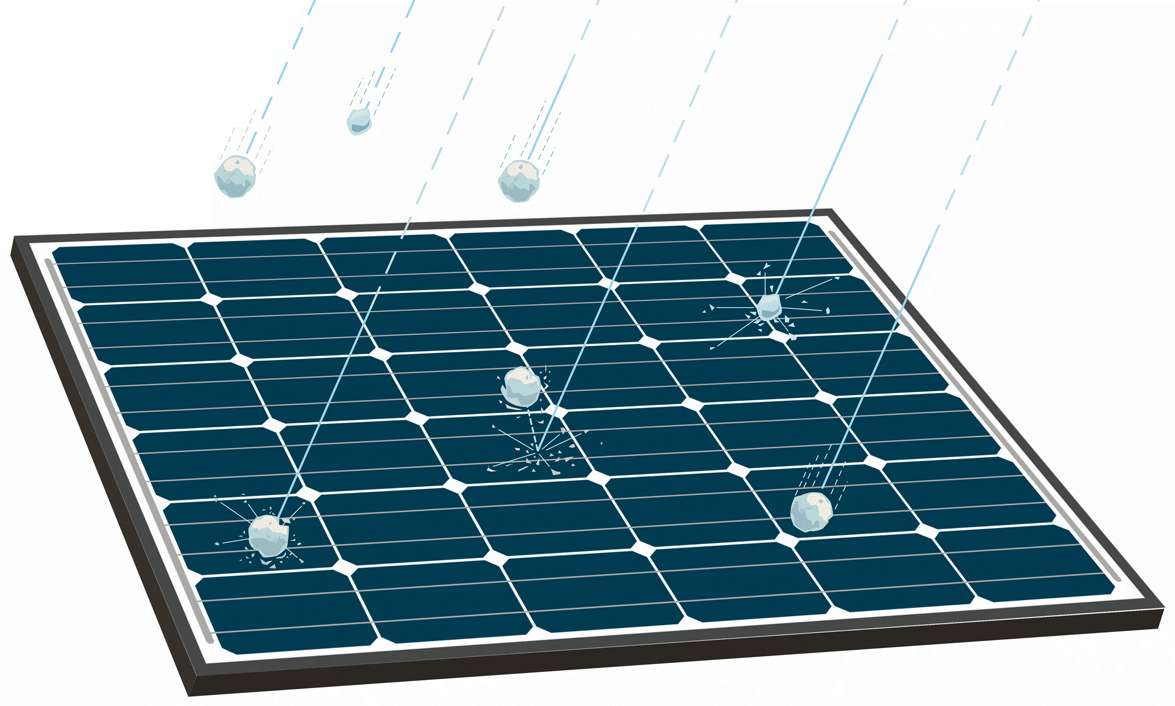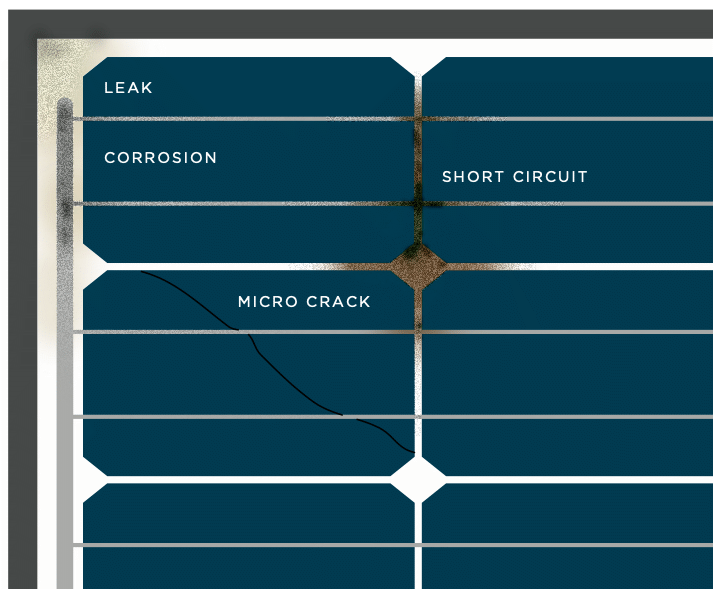
Glass, brittle photovoltaic wafers, thin plastic backing, and an aluminum frame. It all seems so… fragile. I mean, it’s a far cry from steel and stone, so it’s no wonder people are concerned about the durability of their solar panels.

Well, let’s get the most common concern out of the way first—hail. Solar panels from reputable manufacturers use tempered glass that can withstand multiple direct blows from golf ball sized hail traveling 50 miles per hour—or faster. (The impact is less severe when hail hits at an angle, as when the panels is tilted.) Years ago, on the day after I mounted my solar panel to the roof of my van, there was a vicious ten minute hail storm that left dings in my hood but didn’t harm the panel.
However, solar panels aren’t totally indestructible. Let’s say a panel is on the ground and propped up at an angle to catch the most sun. Then a gust of wind blows the panel facedown on rocky ground. It will probably crack the glass, maybe the wafers, too. Stones are harder than hail. So be sure to securely anchor your panels.
If a solar panel is going to go bad, it will probably be due to something less dramatic than objects falling from the sky. Number one is manufacturing defects or sub-par materials, particularly with bargain priced panels. The savings must come from somewhere.
Poor or compromised sealing is another problem. A panel that isn’t sealed properly can let in moisture that will cause corrosion and short circuits. The seals might not have been made properly to begin with. Or years of a panel getting knocked around during unloading, setup, repositioning to follow the sun, takedown, packing away and transport can affect the seals. Also, years of exposure to ultraviolet light can degrade the plastic back sheet, allowing moisture in.

Electrical hot spots can develop in panels with poor soldering of the wires that connect the individual photovoltaic cells. The hot spots can cause short circuits and, in extreme instances, melt the backing and start a fire.
Nonetheless, solar panels come with ten- to twenty-year warranties. That’s better than nearly any other products we might buy. It’s in the manufacturer’s interest to build its products well enough to last at least as long as its warranty. The question, though, is whether the company offering the warranty has the network to easily back it up. Would you be dealing with someone fairly local or on the other side of the planet? Can you get an immediate replacement or do you have to wait? And wait.
Basically, solar panels are tougher than they look. Even though most are designed to be mounted to stationary objects, we mobile folks get many years of trouble-free use from them, as long as we watch for falling rocks, don’t manhandle them too much, and don’t let them tip over.

This is super helpful information. I wondered how tough they really were. I’ve had mine since for 10 years now and they still look brand new…after I wipe them down with vinegar water, that is.
I’m about to find out how mine will hold up. I’m in east TX in the direct path of severe thunderstorms, hail and possible tornados. Too huge to drive around it.
Excellent facets to consider when shopping for the panels.
The latest questions are about the durability of portable lightweight panels that are subjected to daily manual movement, wind gust and solar degradation of exposed components.
great info thanx bob….. ….
Good to know…thanks!
That’s good to knows.
warranties. are only as good as the number of years a company has been in business. raz